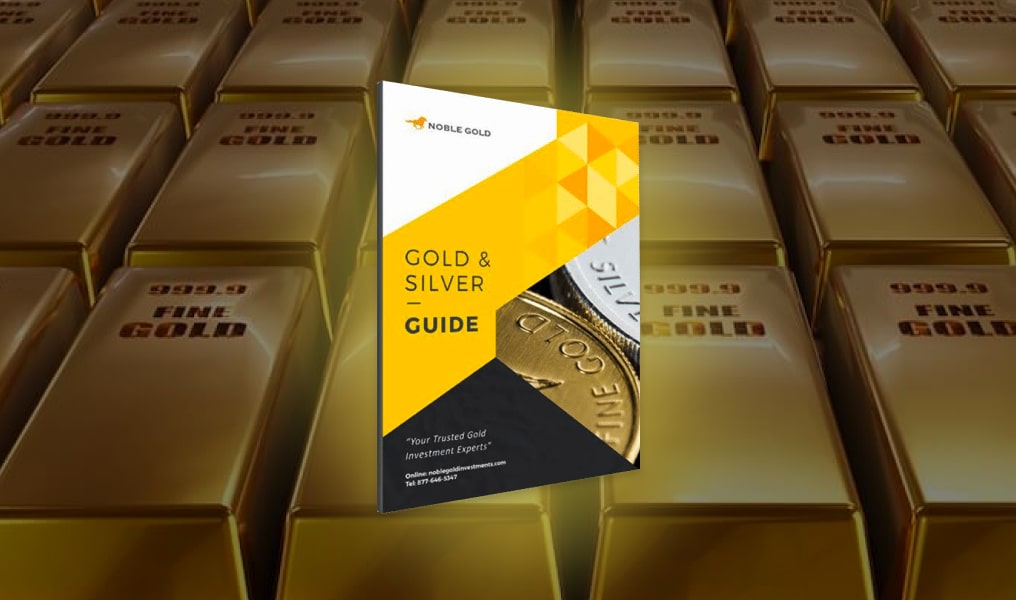If you’ve ever read about the gold standard, you probably have some questions. This monetary system is no longer in use in the global economy, and it’s a complicated concept to understand. At its core, the gold standard exists when countries assign a value to their currency that is directly linked to gold.
This type of system means that each country has a set price at which gold is bought and sold, and each country’s currency has a value that is directly related to gold. While this economic system was a long-standing one, with wealth being directly tied to gold and other precious materials for much of human history, this system has not been used around the world in several decades.
While the history and concepts behind the gold standard may be complicated, it’s important to understand this economic system if you are interested in investing in gold, whether that’s purchasing gold bullions or opening a gold IRA. The value of our money is no longer directly tied to gold, but that doesn’t mean that gold cannot be used to grow your wealth and plan for your future.
History of the Gold Standard
For the gold standard to work, a government has to hold the amount of gold equal to the amount of wealth the country’s currency represents. This key facet of the gold standard system led to its end. However, before you can understand how this system ended, you’ll first need to understand its long history.
Humans have been using gold for thousands of years — even going as far as back as the Egyptians using it in 3,600 B.C, and exchanging it around 600 B.C. From that point, gold became a staple for participating in the economy and demonstrating wealth. Gold was turned into coins and used to purchase goods for centuries. When the nineteenth century began, events took place that set the stage for our current economic systems:
- As early as 1816, Britain began to use gold as a standard for currency, and by the 1870s it became a standard internationally. However, the United States was one of the last countries to adopt a gold standard by passing the Gold Standard Act of 1900.
- After World War I, however, both Great Britain and the United States suspended the standard to pay for wartime expenses with paper money. Becoming reliant on paper currency and printing it excessively, people started trading in physical gold for paper money, despite the rise in the asset, thus inflating the market and eventually leading to the stock market crash of 1929 and the subsequent Great Depression.
- In the early 1930s, the U.S Federal Bank was unable to meet the public demands for liquid assets like cash, which caused even more panic. By 1933, President Franklin D. Roosevelt signed an executive order which banned acts of hoarding, exchanging, and exporting gold. This also established the federal gold reserves at Fort Knox.
- The gold standard ended in the United States with the passing of the Gold Reserve Act of 1934. Individuals needed a license to own gold, and it removed gold as a direct measure of the dollar’s value. As a result, the value of the dollar decreased.
Once the gold standard was no longer used in the United States, the government moved to a fiat currency, which created the conditions that led to our current economic system. Money was no longer backed by gold, but rather, was given value by the changes in the supply and demand of the market.
Nevertheless, you can still purchase gold coins today, as investments in physical assets like precious metals are generally adverse to inflation.
Gold Standard vs. Fiat
Fiat money is a currency that is given value by the government. Its value can change swiftly based on variability in the market and is defined by the changes in supply and demand.
While the gold standard was not easily sustainable, it did have some benefits that fiat money does not. Because the supply of gold does not change very quickly, currency under a gold standard is not as susceptible to large fluctuations based on inflation. With a gold standard, a country is not allowed to print too much money, keeping the value of its currency relatively stable.
Fiat money also has its benefits. It is incredibly cost-effective to produce, facilitates exchanges, and provides a numerical account of the workings of the economy. Fiat money is convenient to use and provides a higher level of control over the nation’s currency.
With these benefits come some disadvantages. Fiat currency can be prone to hyperinflation. The seemingly unlimited supply of money can also lead to economic bubbles, with people, corporations, and governments taking out massive amounts of funds on credit.
What Is the Cost of Gold?
Gold has held value for people since gold deposits were first discovered in North Africa thousands of years ago. Even simply looking at U.S. history, gold drove thousands of people across an entire continent to the state of California, looking to make new lives for themselves during the Gold Rush. While gold is a relatively stable form of wealth, its value has increased heavily over time. But how do you determine the cost of gold?
Experts consider factors such as supply, demand, and investor behavior when determining the current cost of gold. Global events can influence these factors and consequently influence the cost of gold. For example, during the COVID-19 pandemic, many jewelry shops closed — an event that affected the global supply of recycled gold. The price of gold is fixed for the day, and that amount is adhered to by many of the world’s leading banks in China, Canada, Britain, and the United States.
Currently, the price of gold sits around $1,900 per ounce. However, experts predict that it will end the 2022 year at around $1,600. This is a stark contrast to the beginning of 2020, when global events affected pricing in all industries and brought the price of gold above $2,000 an ounce for the first time. So far this year, the events in Russia and Ukraine have created global uncertainty and caused a rise in the cost of gold and other materials.






